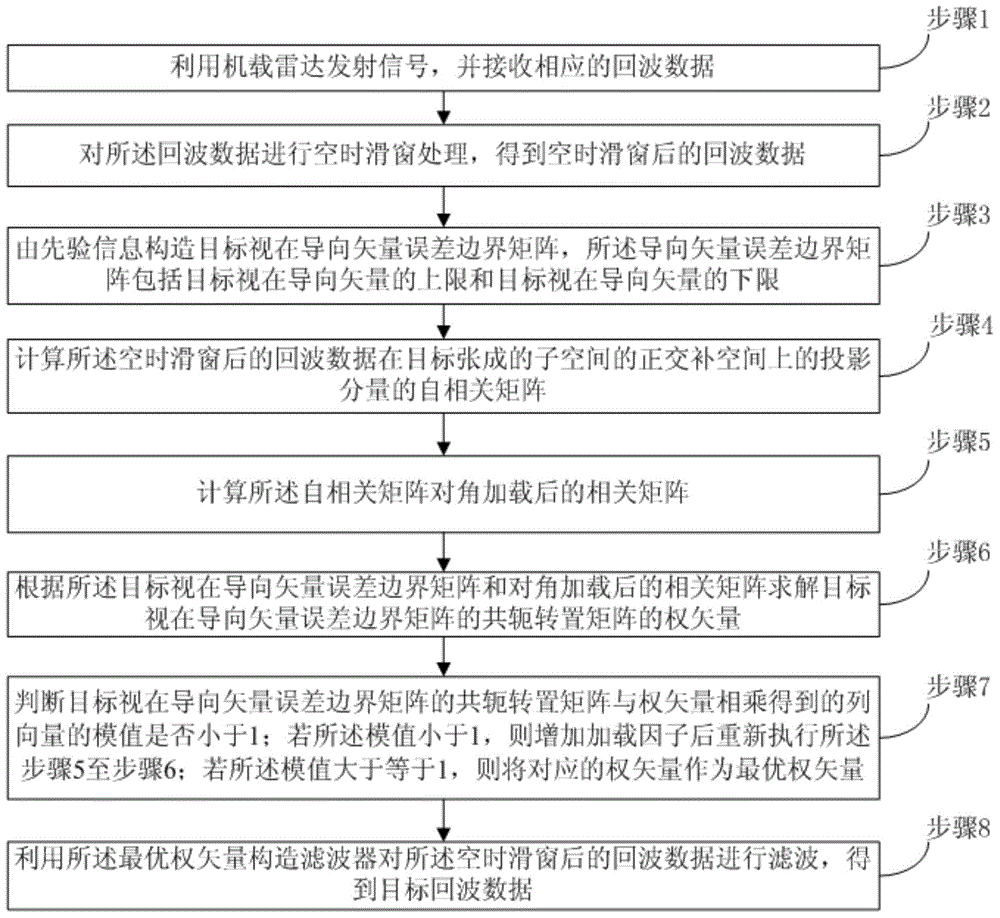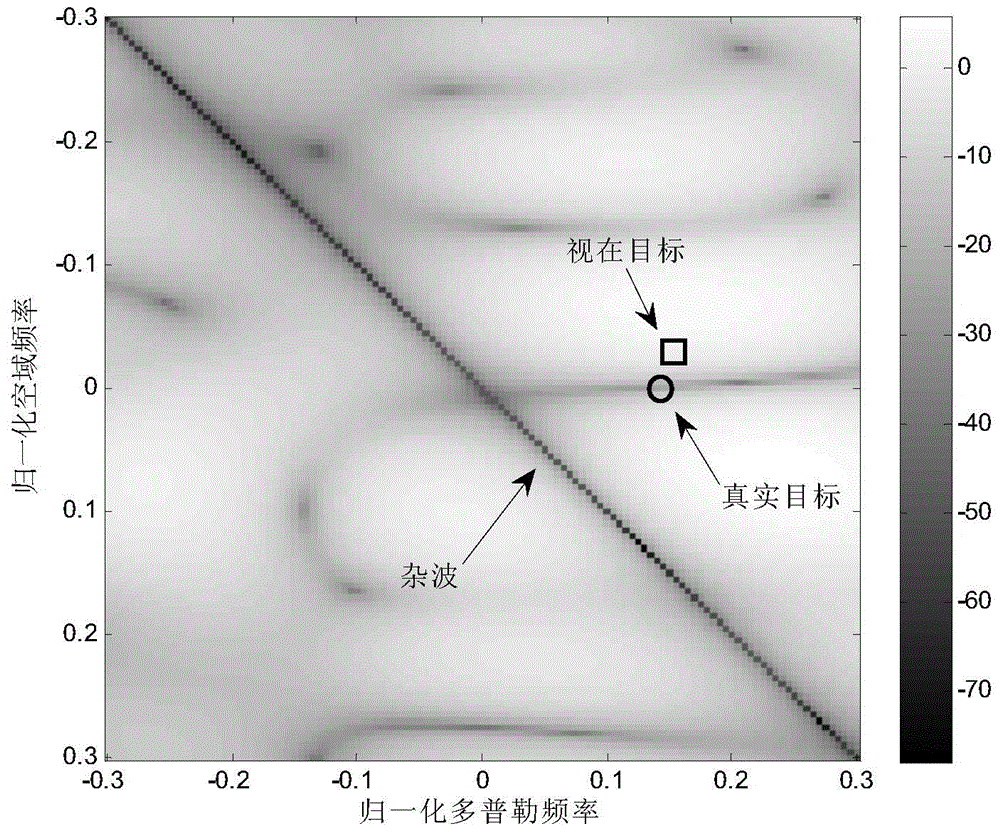Target detection method based on two-dimensional sliding window robust space-time self-adaptive processing
A space-time adaptive and target detection technology, which is applied in the target detection based on two-dimensional sliding window robust space-time adaptive processing, and the echo signal processing field of airborne radar, can solve target detection performance degradation, vector mismatch, Loading volume affects corner loading performance and other issues
- Summary
- Abstract
- Description
- Claims
- Application Information
AI Technical Summary
Problems solved by technology
Method used
Image
Examples
Embodiment 1
[0086] refer to figure 1 , which shows a flow chart of a target detection method based on two-dimensional sliding window robust space-time adaptive processing according to an embodiment of the present invention. This embodiment may specifically include the following steps:
[0087] Step 1. Use the airborne radar to transmit signals and receive corresponding echo data.
[0088] Step 1 described in this embodiment may specifically include the following sub-steps:
[0089] 1a) The airborne radar adopts an N-element equidistant linear array, the array element interval is d, and the number of pulses in a coherent sampling interval is K to transmit signals; it should be noted that the N, d, and K are all natural numbers.
[0090]1b) Receiving corresponding echo data X, wherein the echo data X includes target echo data, clutter echo data, interference echo data, and noise echo data.
[0091] It should be noted that the present invention uses the echo data as the sample to be tested...
Embodiment 2
[0165] Attached below figure 2 An object detection method based on two-dimensional sliding window robust space-time adaptive processing is described.
[0166] refer to figure 2 , which shows a flow chart of a target detection method based on two-dimensional sliding window robust space-time adaptive processing according to an embodiment of the present invention. This embodiment may specifically include the following steps:
[0167] Step 201, the radar transmits and receives echo data X.
[0168] It should be noted that step 201 corresponds to step 1 in the first embodiment, and reference may be made to the related description of step 1 in the first embodiment, and details are not described here in this embodiment.
[0169] Step 202, performing space-time sliding window processing on the echo data to obtain X 2D .
[0170] It should be noted that X 2D It is the echo data processed by the space-time sliding window. Step 202 corresponds to step 2 in the first embodiment. Fo...
PUM
 Login to View More
Login to View More Abstract
Description
Claims
Application Information
 Login to View More
Login to View More - R&D
- Intellectual Property
- Life Sciences
- Materials
- Tech Scout
- Unparalleled Data Quality
- Higher Quality Content
- 60% Fewer Hallucinations
Browse by: Latest US Patents, China's latest patents, Technical Efficacy Thesaurus, Application Domain, Technology Topic, Popular Technical Reports.
© 2025 PatSnap. All rights reserved.Legal|Privacy policy|Modern Slavery Act Transparency Statement|Sitemap|About US| Contact US: help@patsnap.com



